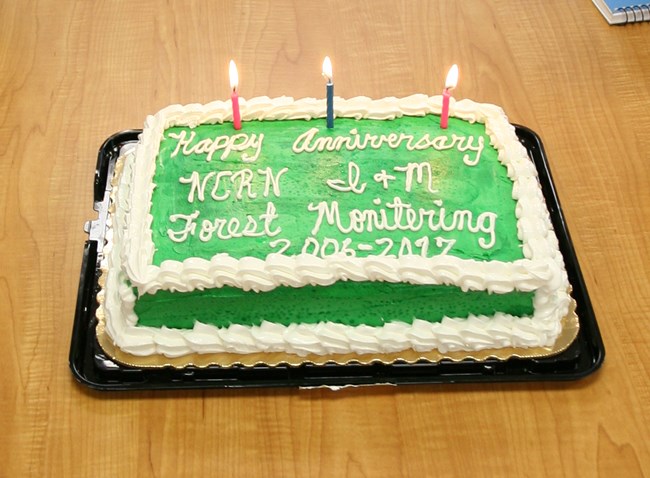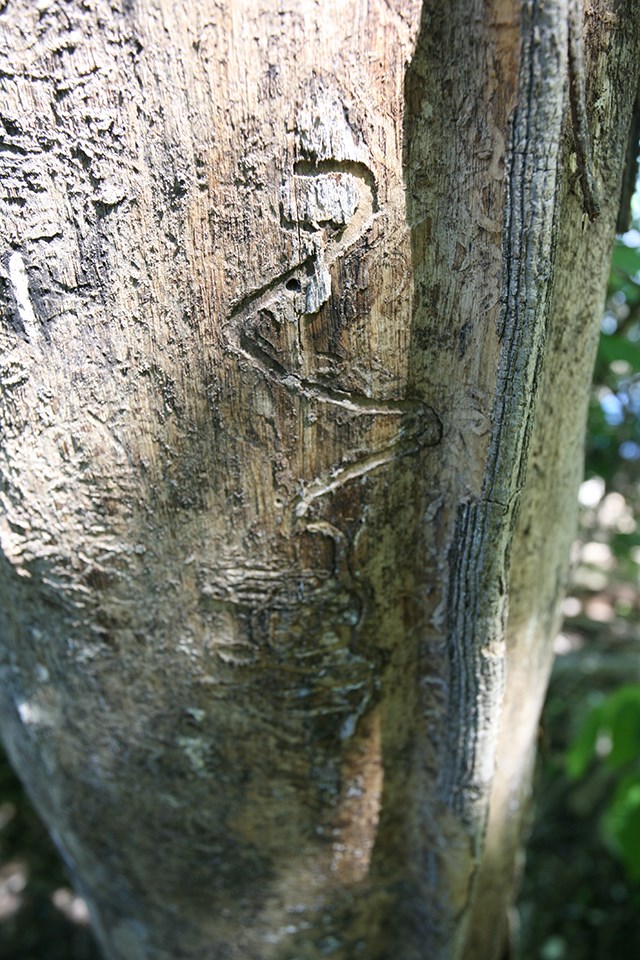Last updated: January 9, 2018
Article
NCRN Forest Monitoring Anniversary

NPS
Why all the fuss for 3 candles on a cake? The fact that the National Capital Region Inventory & Monitoring Network (NCRN I&M) has now completed 3 full monitoring cycles of all 426 forest plots in NCR parks may not sound like much, but it is. Three sessions of intense measuring, identifying, and recording in the same location every 4 years, and having hundreds of plots spread throughout the region, allows us to start to see discernable direction in forest changes. (Not to mention that at a pace of a little over 100 plots per year, 3 cycles represents 12 years of effort...)
While we are just now beginning a deep dive into the data to try and peer into the future of our forests, there are several things we’ve already observed and quantified that can be shared right now.
Catoctin & Regeneration
NCRN forest monitoring began in 2006, three years before Catoctin Mountain Park began deer management in response to extremely poor forest regeneration rates. That means we were able to document some of the park’s lowest tree seedling levels, and then the response of seedlings to reduced deer browse pressure. From 2006-2009 to 2014-2017, tree seedlings multiplied more than 10x, from about 630 to over 6,800 per hectare!

NPS
Ash Trees and Emerald Ash Borer
The effects of emerald ash borer on ash tree populations have been dire. Since our first round of monitoring in 2006-2009, marsh-loving pumpkin ash trees at Piscataway Park and Dyke Marsh have decreased by about half and white ash trees at Catoctin Mountain Park have declined by a quarter (from 24 to 18 per hectare).
Vines on Trees at Forest Edges
NCRN forest data also highlight how forest edges may recede and smaller forest patches shrink as climbing vines become more common and cause higher tree mortality at forest edges. This is a grave threat, especially to small urban forests, that may be helped by active management of climbing vines near forest edges.
Stiltgrass and Barberry
Several non-native, invasive plants expanded dramatically in NCR forests over the last 12 years. Japanese stiltgrass which thrives in shade, spreads quickly, and shades out other small forest plants, went from 5.3% to 7.5% cover regionally, and expanded from 129 plots to 161 plots from 2006-2009 to 2014-2017. Japanese barberry, a spiny shrub that makes excellent habitat for black-legged ticks, grew from 0.5% to 1.0% cover regionally, and expanded from 37 plots to 52 plots.
